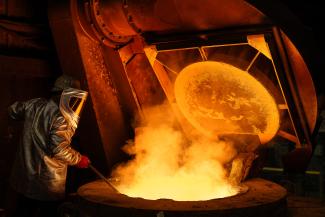
Blog
The Essential Role of Environmental Product Declarations (EPDs) for Sustainable Construction
01 July 2025
Why Environmental Product Declarations (EPDs) are the future of sustainable constructionIn an industry under increasing scrutiny for its environmental impact, transparency is no longer a luxury—it’s a necessity. Construction professionals are being called to account for the sustainability of the materials they use. Enter the Environmental Product Declaration (EPD): a tool that’s quietly becoming a cornerstone in the journey toward greener, more responsible building practices. But what exactly is an EPD, and why is it so essential for the future of construction? Demystifying EPDs: What they are and why they matterAn EPD is a verified document that provides detailed information about the environmental impact of a product throughout its lifecycle. From raw material extraction to end-of-life disposal, an EPD offers a comprehensive look at factors such as carbon emissions, water use, and energy consumption. Think of an EPD as the sustainability passport for construction materials. It’s a way for manufacturers to prove their environmental credentials and for buyers to make more informed, eco-conscious choices. Environmental Product Declarations launched for entire ductile iron range Top blogsThe growing demand for transparencyGovernments, developers, and contractors are raising the bar for sustainability. Green building certifications like BREEAM and LEED now emphasise the use of products with verified environmental data. In response, EPDs have moved from being a "nice-to-have" to a critical component of modern construction procurement. The UK's recent commitment to achieving net zero emissions by 2050 has only amplified this shift. To meet these ambitious goals, everyone in the construction supply chain must take responsibility for reducing their carbon footprint—and EPDs provide a vital roadmap. The role of EPDs in the carbon calculationWhy do EPDs matter for carbon reduction? Because you can’t manage what you don’t measure. EPDs give developers the data they need to calculate the embodied carbon of their projects accurately. For example, infrastructure projects often face intense scrutiny due to their long-term environmental impact. By selecting products with EPDs, project managers can ensure they are taking proactive steps to reduce carbon emissions across the entire project lifecycle. 
Driving SustainabilityWrekin’s commitment to transparent environmental impactWrekin Products is proud to lead the way in our industry. We recently took the significant step of offering EPDs for our entire range of ductile ironwork, highlighting the environmental footprint of our products. These independently verified documents give our customers the data they need to make informed, sustainable decisions. By offering full transparency on carbon emissions, energy use, and resource consumption, we’re supporting a more responsible future for the construction industry. This decision to provide EPDs for our products aligns with our goals of providing high-quality, sustainable, and durable construction materials and solutions. Building a competitive advantage with EPDsFor manufacturers, providing EPDs isn’t just about compliance; it’s a way to differentiate in a crowded market. As procurement policies increasingly favour verified data, companies offering transparency through EPDs are better positioned to win contracts. Contractors and specifiers also benefit from choosing products with EPDs. By doing so, they demonstrate their commitment to sustainability, a factor that can be pivotal when competing for high-profile, environmentally driven projects. A collective responsibilityThe construction industry is uniquely placed to make a significant impact on global emissions. But to achieve this, we need to move beyond token gestures and focus on tangible, data-driven solutions. EPDs aren’t just for manufacturers—they benefit architects, engineers, contractors, and even end-users by providing clear, consistent, and comparable environmental data. Informed decision-making at every stage of the construction process is essential to reducing our collective carbon footprint. Looking aheadThe future of construction lies in sustainability. Regulatory pressures and market demands will continue to grow, and those who embrace transparency now will be the ones to thrive. Environmental Product Declarations are more than just documents—they are tools for change, helping us all build smarter, greener, and more responsibly. As an industry, we need to collaborate to push EPD adoption forward, ensuring that every product choice contributes to a more sustainable future. For more insights into the significance of Environmental Product Declarations and their role in sustainable construction, I recommend exploring our article: |







